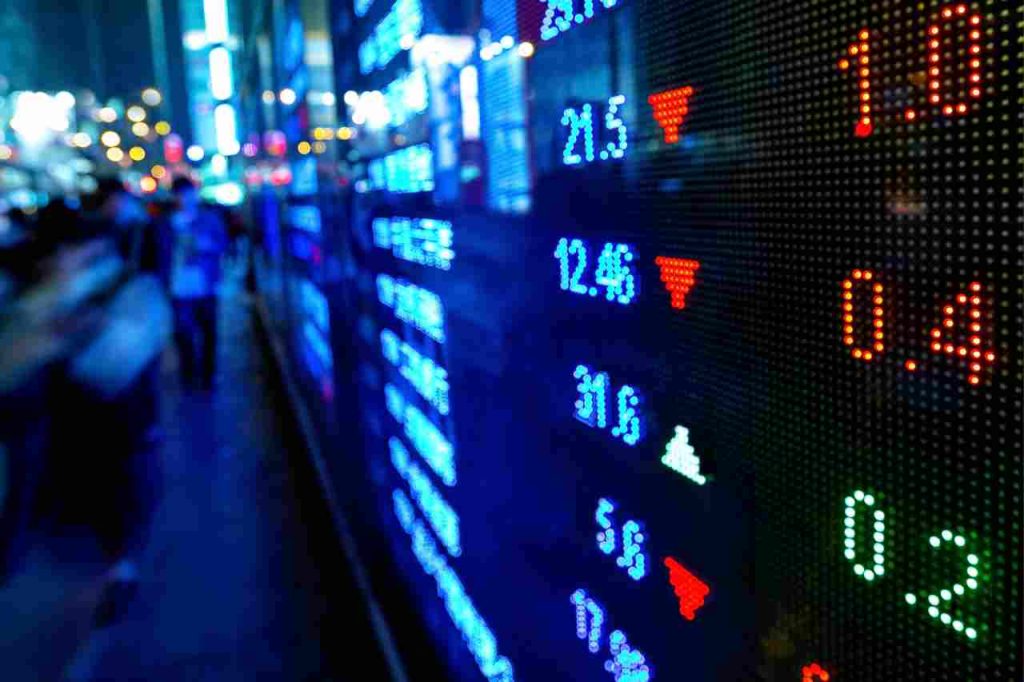Table of Contents
The world of finance is a vast and intricate ecosystem, with stock markets playing a pivotal role in the global economy. One such market that has long fascinated investors and analysts alike is the Japanese stock market, home to the Nikkei 225 Index.
We will take a deep dive into the Nikkei 225, unraveling its history, significance, and intriguing world of index investing within the context of Japan.
Understanding the Nikkei 225 Index
The Birth of Nikkei
The birth of the Nikkei 225 in 1949 marked a significant moment in Japan’s financial history. At the time, Japan was still recovering from the devastation of World War II, and its economy was in a state of transition. The introduction of the Nikkei was a response to the need for a reliable indicator of Japan’s economic health and stock market performance.
The Nihon Keizai Shimbun (Nikkei), a highly respected financial newspaper, played a pivotal role in this endeavor. By launching the Nikkei, the newspaper aimed to provide investors, businesses, and policymakers with a tool to gauge the pulse of Japan’s financial markets and overall economic progress.
The Nikkei 225’s creation was not only a practical step but also a symbolic one. It represented Japan’s determination to rebuild and revitalize its economy after the war. Over the decades, the Nikkei has evolved into an iconic symbol of Japan’s economic prowess and resilience.
It has not only served as a vital financial benchmark but also as a source of pride for the nation, reflecting Japan’s ability to adapt, innovate, and thrive in the face of adversity.
Thus, the birth of the Nikkei 225 was not merely the launch of an index; it was a testament to Japan’s post-war recovery and its ascent as a major player in the global economy.
The Components
The composition of the Nikkei 225 Index is a critical aspect of its significance and appeal to investors. This index is meticulously curated to include 225 of Japan’s most well-known and actively traded companies listed on the Tokyo Stock Exchange (TSE), one of the world’s largest stock exchanges.
These businesses represent the cream of the crop in Japan’s corporate landscape since they were carefully chosen based on their market capitalization and trade activity.

One of the remarkable features of the Nikkei 225 is its diversity across various sectors. The index encompasses a broad spectrum of industries, such as technology, automotive, finance, and manufacturing. This sectoral diversity allows investors to gain exposure to Japan’s entire economic landscape rather than being concentrated in a specific industry or sector.
As a result, changes in the Nikkei 225 can provide useful insights into the general health and performance of Japan’s economy, as it reflects the fortunes of companies from a variety of industries.
Within the Nikkei 225, there are several household names that are instantly recognizable to investors and consumers worldwide. Companies like Toyota, Sony, and SoftBank are synonymous with Japan’s reputation for innovation and excellence.
These corporations not only contribute significantly to the index’s performance but also represent the nation’s global impact in industries ranging from automotive manufacturing to consumer electronics and telecommunications.
For investors, these familiar names can add a level of confidence and comfort when considering investments in the Nikkei 225, as they are emblematic of Japan’s economic strength and influence on the global stage.
Methodology
The methodology employed by the Nikkei 225 Index sets it apart from the majority of other stock indices, making it unique in its approach to tracking Japan’s stock market. While most indices, like the S&P 500 or the FTSE 100, rely on market capitalization-weighted methodologies, the Nikkei 225 takes a different path by using a price-weighted methodology.

In a price-weighted index like the Nikkei 225, the relative price of each component stock plays a crucial role in determining its influence on the index’s performance. Essentially, stocks with higher nominal prices are assigned more significant weightings within the index, regardless of their actual market capitalization.
This means that a stock trading at a higher per-share price will have a more substantial impact on the index’s movements, even if the company’s overall market value is relatively small.
While the Nikkei 225’s price-weighted approach has its merits, such as simplicity and ease of calculation, it can lead to certain anomalies and limitations. One significant drawback is that it doesn’t necessarily reflect the true value or size of a company within the index. A stock with a high nominal price but a relatively low market capitalization can distort the index’s performance, as it may not accurately represent the overall health or significance of that company within Japan’s economy.
This divergence from market capitalization-weighted indices can make the Nikkei 225 more susceptible to idiosyncratic movements driven by individual stock price changes rather than reflecting broader market trends.
Consequently, investors and analysts often consider both market capitalization-weighted and price-weighted indices to gain a more comprehensive understanding of Japan’s stock market dynamics.
The Significance of the Nikkei 225
A Window into Japan’s Economy
The Nikkei 225 is often considered a barometer of Japan’s economic health. As Japan is one of the world’s largest economies, changes in the Nikkei can provide valuable insights into global economic trends.
A rising Nikkei is generally seen as a sign of economic growth and stability, while a falling index may indicate economic challenges or uncertainties.
Cultural and Historical Context
Beyond its economic significance, the Nikkei 225 holds a unique place in Japanese culture and history. It has been a symbol of Japan’s post-war recovery and subsequent economic boom.
The index’s fluctuations are closely followed by not only investors but also the general public in Japan, making it a key topic of discussion in daily life.

International Appeal
The Nikkei 225’s appeal extends well beyond Japan’s borders. It is widely tracked by international investors and financial institutions as a key indicator of Asian markets. Many global investment portfolios include Japanese equities, and the Nikkei’s performance can impact investment decisions worldwide.
The Journey of the Nikkei 225: Historical Milestones
To truly appreciate the Nikkei 225’s significance, it’s essential to take a journey through its historical milestones. This journey reflects Japan’s economic evolution over the decades and provides context for the index’s performance.
The Post-War Era
The Nikkei 225 was born in the aftermath of World War II when Japan was rebuilding its shattered economy. During this period, the index started at a base level of 176.21 on September 7, 1950. It was a humble beginning for what would later become a global financial icon.
The Economic Miracle
The 1960s and 1970s marked a period of extraordinary economic growth for Japan, earning it the moniker “Japanese Economic Miracle.” The Nikkei 225 soared during this time, reaching the 10,000-point mark in 1984 and doubling again to 20,000 points by 1986.
The Bubble and Burst
The late 1980s and early 1990s were a period of economic exuberance in Japan. The Nikkei 225 reached its all-time high of 38,915.87 on December 29, 1989. However, this euphoria was short-lived, and the market subsequently experienced one of the most dramatic crashes in history. By the early 2000s, the Nikkei had plummeted to around 7,000 points.
The Lost Decades
The 1990s and 2000s are often referred to as Japan’s “Lost Decades.” The country struggled with economic stagnation, deflation, and banking crises. The Nikkei 225 languished below its pre-crash highs for years, reflecting the broader economic challenges Japan faced.
The Road to Recovery
In the 2010s, Japan embarked on a journey to rejuvenate its economy, employing various strategies, including monetary stimulus and structural reforms. The Nikkei 225 responded positively to these efforts, gradually climbing back toward the 30,000-point level by the mid-2020s.

The Art of Index Investing: Nikkei 225 as a Benchmark
Index Investing Basics
Before delving into the intricacies of index investing with the Nikkei 225, it’s crucial to understand the fundamentals of this investment strategy. Index investing involves tracking a specific stock market index, like the Nikkei, to replicate its performance. This approach is known for its simplicity, diversification benefits, and lower management fees compared to actively managed funds.
Passive vs. Active Investing
Index investing falls under the category of passive investing, where investors aim to match the returns of a chosen index rather than beat the market. Active investing, on the other hand, involves portfolio managers making investment decisions to outperform the market. Passive investing has gained popularity for its long-term, low-cost approach.
Why Invest in the Nikkei 225?
Investing in the Nikkei 225 can offer several advantages:
Diversification
By investing in a variety of assets, the investment approach known as diversification aims to disperse risk. In the context of the Nikkei 225, it means that the index includes companies from various sectors of the Japanese economy, such as technology, automotive, finance, and manufacturing. Investors can lower the risk of investing in individual stocks by maintaining a diversified portfolio of firms inside a single index like the Nikkei 225.
This is because different sectors’ performance may not be strongly correlated, which helps to lessen the impact of underperforming stocks.
Exposure to the Japanese Economy
Investing in the Nikkei 225 provides exposure to the performance of the Japanese economy. This is valuable for global investors seeking to diversify their portfolios geographically. One of the biggest economies in the world, Japan’s performance can differ from that of other major economies like the US or Europe.

By including Japanese stocks in their portfolios through the Nikkei 225, investors can benefit from the potential growth and returns associated with Japan’s unique economic dynamics.
Long-Term Growth Potential
Despite experiencing historical ups and downs, Japan remains a major global economy with significant long-term growth potential. The Nikkei 225, as a representation of Japan’s stock market, reflects this potential. Over the years, Japan has demonstrated its capacity for innovation, technological advancement, and global competitiveness.
For investors with a long-term investment horizon, exposure to the Nikkei 225 can provide the opportunity to participate in Japan’s economic growth and recovery.
Low Costs
In comparison to actively managed funds, passive investment vehicles like index funds and ETFs that track the Nikkei 225 frequently offer cheaper management fees. This cost advantage is appealing to investors looking to minimize expenses while gaining exposure to a diversified portfolio of Japanese stocks.
Lower fees can enhance the overall returns on investment, making passive investments tracking the Nikkei 225 an attractive option for cost-conscious investors seeking exposure to the Japanese stock market.
Risks and Considerations
While index investing can be an attractive strategy, it’s not without risks and considerations:
Market Volatility
Like any stock market index, the Nikkei 225 is subject to fluctuations and market volatility.
Currency Risk
For international investors, fluctuations in the Japanese yen can impact returns.
Country-Specific Risk
Japan-specific economic and geopolitical factors can affect the index’s performance.
Not Guaranteed Returns
Investing in the index does not guarantee positive returns, and investors can still suffer losses.
The Future of the Nikkei 225
As we look ahead, it’s essential to consider the potential future developments and challenges facing the Nikkei 225 and the Japanese stock market.
Demographic Challenges
One of Japan’s most pressing economic challenges is its aging population and low birth rate. This demographic trend can have profound implications for the country’s labor force, consumer demand, and economic growth.
These factors will undoubtedly influence the performance of the Nikkei 225 in the coming years.

Technological Innovation
Japan has a history of technological innovation, and this trend is expected to continue.
Companies in the Nikkei 225 are probably going to be very important in upcoming industries like renewable energy, robotics, and artificial intelligence. Investors will need to monitor these developments closely.
Global Economic Integration
Japan’s economic ties to the rest of the world are strong, and global economic conditions will continue to impact the Nikkei 225.
Trade agreements, geopolitical tensions, and economic shifts in other major economies can influence the index’s performance.
Sustainability and ESG Investing
For investors, environmental, social, and governance (ESG) requirements are becoming increasingly relevant. Japanese companies within the Nikkei 225 will need to adapt to these evolving standards to attract socially responsible investors.

Conclusion
The Nikkei 225 Index stands as a symbol of Japan’s economic journey, from post-war reconstruction to periods of remarkable growth and subsequent challenges. Its unique price-weighted methodology sets it apart from other global indices, offering a distinct perspective on the Japanese stock market.
As a benchmark for index investing, the Nikkei 225 provides investors with an opportunity to access Japan’s diverse economic landscape. Despite its hazards, it remains an appealing alternative for individuals looking to diversify their portfolios and obtain exposure to one of the world’s largest economies.
As we peer into the future, the Nikkei 225 will continue to be a reflection of Japan’s economic fortunes, shaped by demographic changes, technological advancements, and global economic trends. Whether you’re a seasoned investor or someone simply curious about the intricacies of the financial world, the Nikkei 225 Index invites you to explore the dynamic and ever-evolving landscape of the Japanese stock market.










